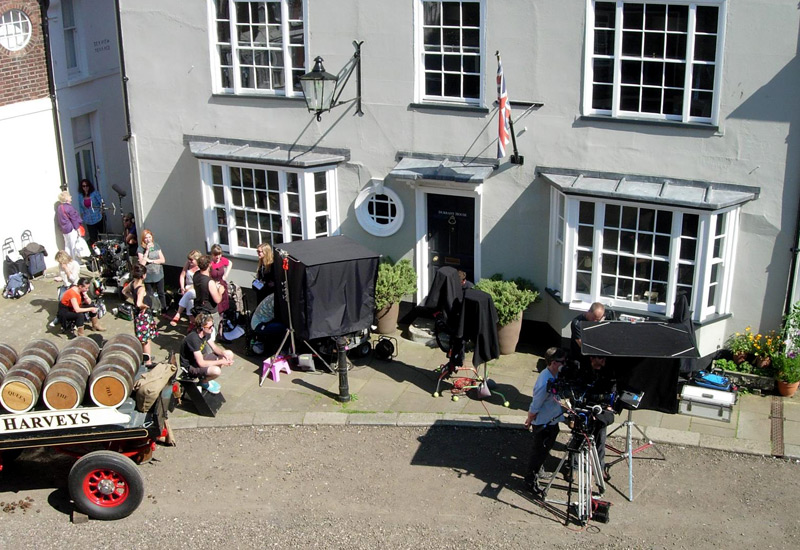The director – dressed in blue shirt, blue jeans – prowls down the street as though himself on stage and calls for action.
A cast of 25 actors, nearly all extras, take up position and then walk, rather woodenly at first. A cameraman shielded in a black semi-tent trains his zoom lens. The action is over almost before it has begun, and immediately another rehearsal is called. The silence is uncanny; it could be a silent movie. A vintage car hoots its horn and a single female voice cries out “For pity’s sake . . .” but the rest is lost in the distance to the Town Hall, where the street is half in deep shadow.
The director moves to the monitor screen, actors check their headgear, the make-up artist adjusts moustaches – adhesion already suffering from perspiration in the morning sun. Sausages on sticks are handed round among the 50 or so actors and crewmen. One actress takes two for it is already 11.30 by the church clock. A fresh wave of townspeople and visitors about their business are allowed to pass through the set, incongruous in their modern, dressed-down holiday attire.
The sky is a cloudless blue, gulls wheel overhead and the house martins dart from under the eaves. There comes the sound of horses hooves up East Street, but they cease as their turn has not yet come.
Another call for action, and the scene repeats itself. Again, there is no emotion in evidence and little drama, all rather humdrum and anonymous. “Good, once more,” calls the director. “Quiet please,” then, “very good” and that particular scene shoot is accomplished, professionally, slotting into place, like a piece in a jigsaw.
Photo: Kenneth Bird



